NewGuy83
....But when I paint, you can still see the seam.
There's a couple tricks to rid yourself of this issue...
1. After sanding, hold the model up to a light (between your eye and the light, and just slightly below the light) and spin/twist the model around to view at all angles...this will show every imperfection.
In this pic, you can see the imperfection, just forward of the "hell hole" cover(square piece), as well as the sink marks fore and aft.(note...the model is about 6 inches away from the light, toward my eye, not directly under it)
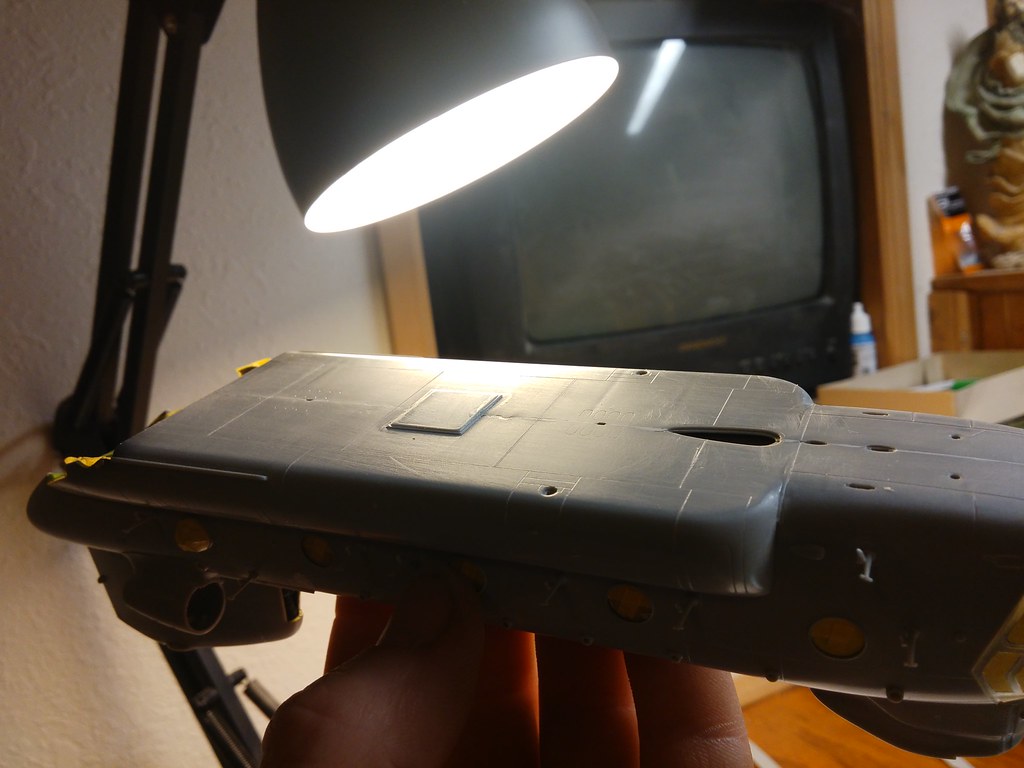
Another way to spot issues, is to brush on a line of silver paint, just along the seam...
Even with just this, the blemish is clearly visible, just in front of the square plate...
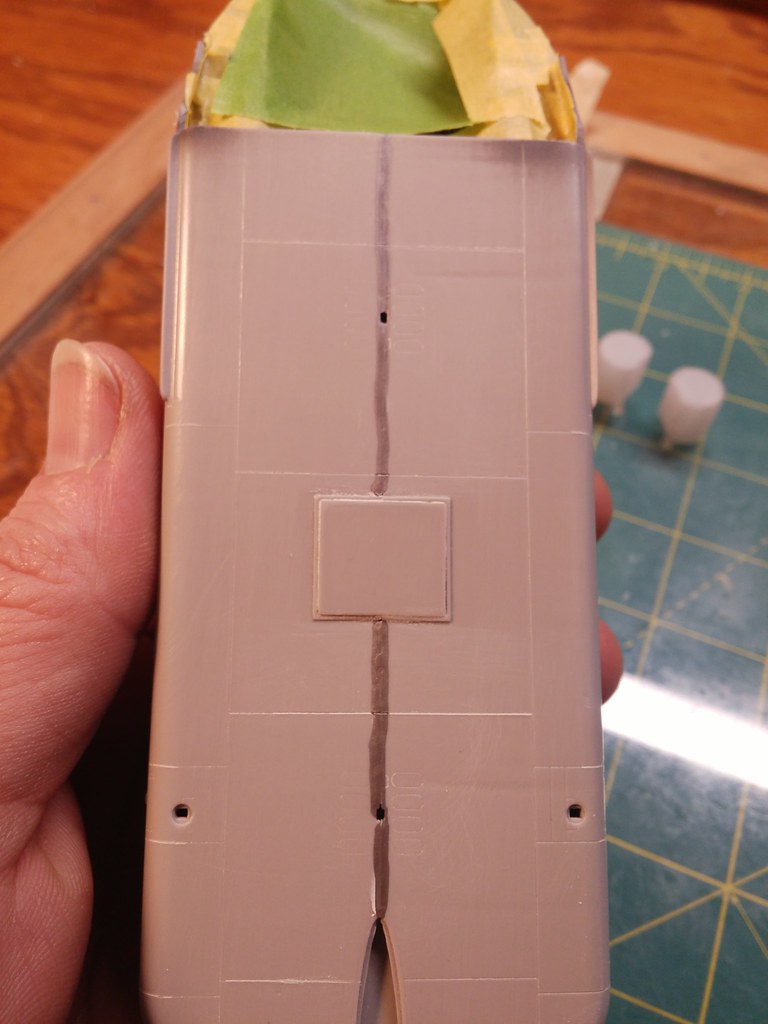
After a little sanding...
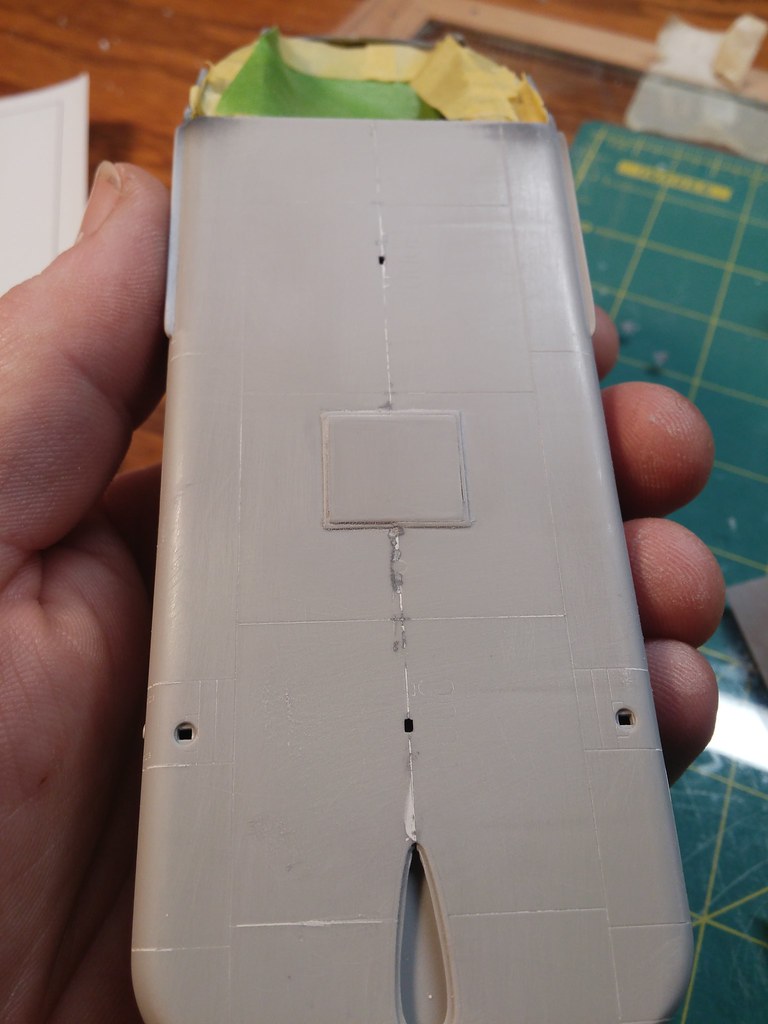
The remaining paint shows where you need a little filler.
Now...to fill in the seam.
I usually use CA(superglue), and have done so on this seam...or you can use putty (I like Tamiya putty), which I used to fill in the sink marks...
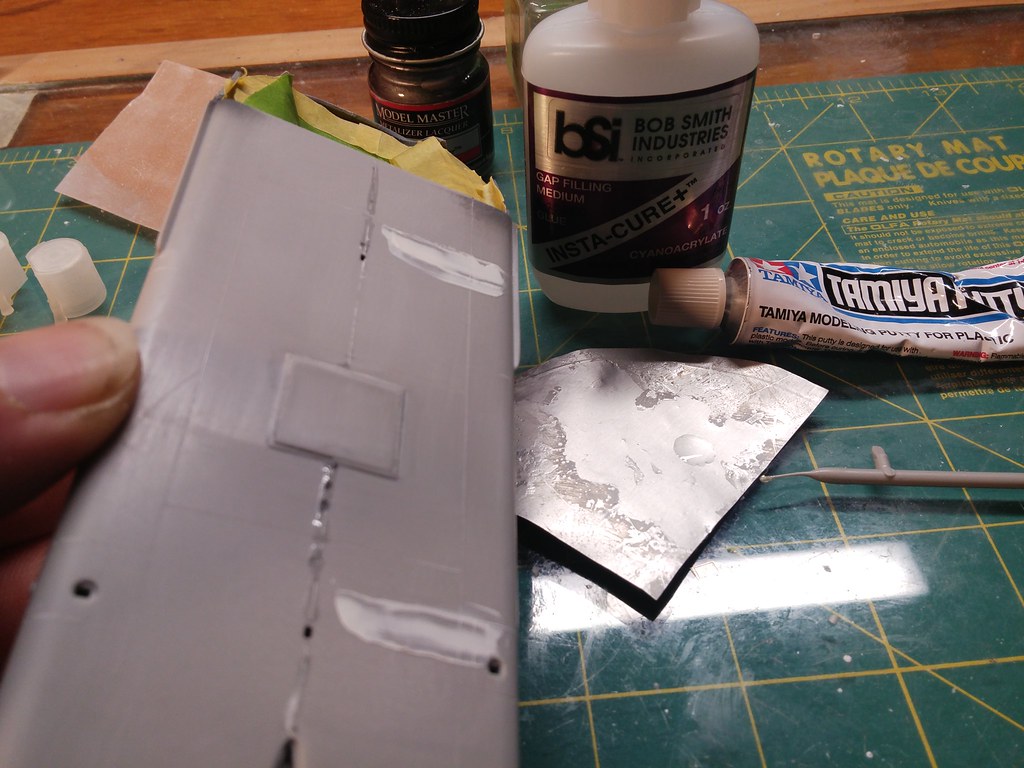
I put a drop of CA on a "palette" and use a bit of stretch sprue as an "applicator"(as seen in pic).
After sanding, I could still see a tiny bit of seam, when held to the light. I ran another bead of CA and sanded again...
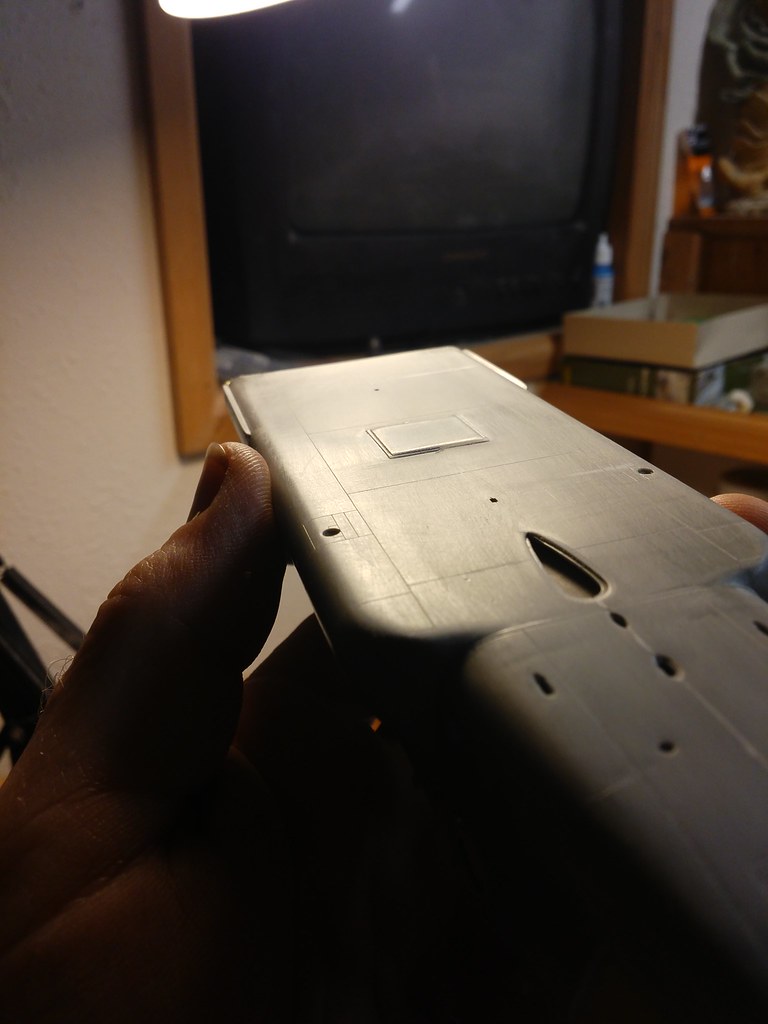
I can't show painting results, as I have been doing this as I make this post. When I do paint, I'll spray along the seams first...give it a couple minutes drying time and check it against a light again. If seams show, I'll run a bead of CA...sand...check, etc.